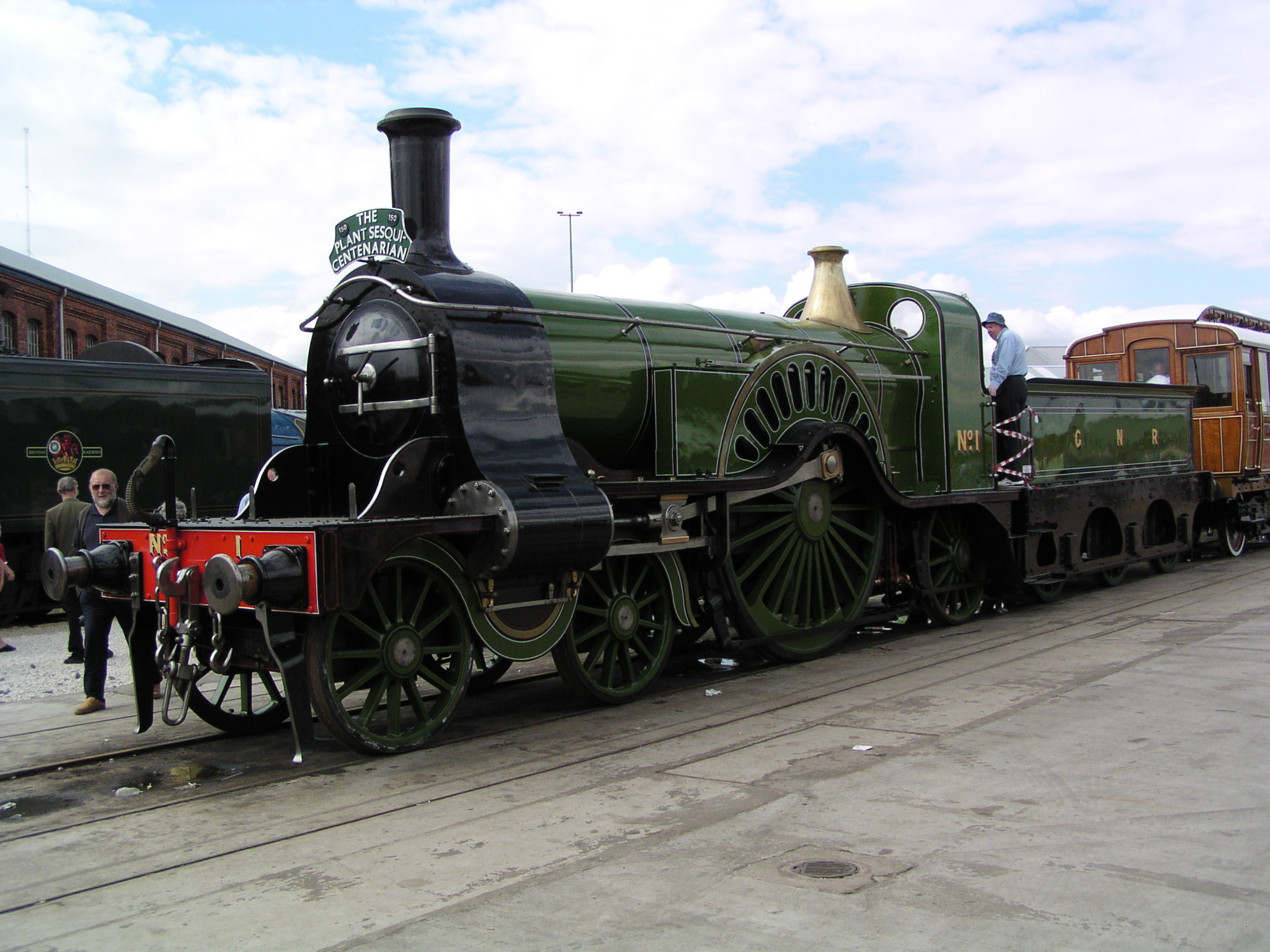- GNR Stirling 4-2-2
Infobox Locomotive
powertype=Steam
name = GNR 521 Class
caption = Preserved No 1
designer =Patrick Stirling
builder =
builddate = 1870
totalproduction =
whytetype = 4-2-2
gauge =
leadingsize =
driversize = 8'1"
length =
weight = 39 tons
fueltype = coal
fuelc
waterc
cylindercount =
cylindersize =
firearea =
boilerpressure = 140psi
tractiveeffort =
railroadclass=| The Great Northern Railway (GNR) G class Stirling Single is a class of steam locomotive designed for express passenger work. Designed byPatrick Stirling , they are characterised by a single pair of largedriving wheel s which lead to thenickname "eight-footer".Development
On his arrival at GNR, Stirling set out to standardise the railway's rolling stock. He also borrowed a 'single-wheeler' from the
Great Eastern Railway and, in1868 , designed two versions of2-2-2 with 7ft.1in driving wheels.The outcome, in
1870 was a locomotive with 8ft. 1in . drivers, designed specifically for high speed expresses betweenYork andLondon . The norm in those days was inside cylinders. Not only were there frequent failures of the cranked axle shafts, with such large drivers, they would have set the boiler too high. He therefore used outside cylinders with a four wheeled bogie for lateral stability at the front end.The GNR did not number its locomotives sequentially, instead using numbers freed up by withdrawing older locomotives. Thus the first of the class became GNR No. 1.
Performance
A total of forty nine were built at Doncaster, with some variation between, particularly improvements in boiler pressure. The last ones were coded G1 Class (ten) and G2 Class (six). They were able to haul 275 ton trains at an average of 50mph, with a top speed, on lighter trains, of 85mph, taking part in the
1895 Race to the North . GNR Stirling No 775 made the 82 miles to York in 1 hour 16 minutes. This means an average speed of 64.7 mph = 108 km/hPreservation
The first of the class, No 1 is the only engine to be preserved. It is exhibited at the
National Railway Museum ,York , UK.Modelling
An 18" gauge model of No.1 was built in
1898 , at theRegent Street Polytechnic , from a set of parts supplied byW. G. Bagnall . In 1926 this locomotive was bought by the Fairbourne Miniature Railway and in 1936 it was sold to theJaywick Miniature Railway [http://shewolf.notnet.co.uk/jaywick/history/rail.shtml] , which ran it until 1939. Whether the locomotive still exists is unknown.Bagnall had earlier, in
1893 , supplied a similar model (works number 1425) to Lord Downshire ofEasthampstead Park ,Crowthorne Berkshire . This engine was later preserved by Mr Hoare in the Boys Reading Room at the Royal Naval Training School [http://www.chdt.org.uk/HMS_Gannet/T.S._Mercury_1913__1968/ts_mercury_1913_1968.html] Hamble but its present location is unknown.Bachmann produced an HO model of the character "Emily", based on a GNR Stirling 4-2-2, in their line of
Thomas the Tank Engine trains sold in America.In fiction
Emily, a character from
Thomas and Friends , is based upon this engine.References
* Herring, P., (2000) "Classic British Steam Locomotives" Leicester: Abbeydale Press
Links
* [http://www.nrm.org.uk/collections/loco/stirlingsingle.asp Stirling Single No 1 at the National Railway Museum]
Wikimedia Foundation. 2010.
